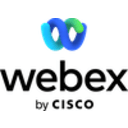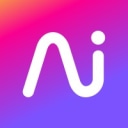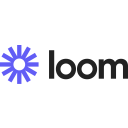Zoom vs ZoomInfo: Choosing the best tool for your business
- 01Zoom Meetings vs ZoomInfo: overview
- 02What's the difference between Zoom Meetings and ZoomInfo?
- 03Zoom Meetings pros and cons
- 04ZoomInfo pros and cons
- 05Zoom Meetings compared to ZoomInfo
- 06ZoomInfo compared to Zoom Meetings
- 07Features comparison
- 08Zoom Meetings vs ZoomInfo: Which is the best for your business?
- 09Promotions on Video Conferencing software
- 10Alternatives to Zoom Meetings & ZoomInfo
Save up to $252 on Zoom Meetings
Save up to $252 on Zoom Meetings
If your business relies on data for sales and marketing, you need a robust tool to assist you in sourcing, managing, and utilizing that data effectively. However, navigating through the multitude of options available in this space can be overwhelming.
To provide some clarity, we will compare two prominent tools in this category—Zoom and ZoomInfo. While Zoom has gained widespread recognition as a video conferencing platform, ZoomInfo is a distinct entity, specializing in B2B contact and company data. We will delve into their respective features, pricing structures, advantages, and disadvantages to help you make an informed decision based on your business's specific data needs and budget constraints.
Zoom Meetings vs ZoomInfo: overview
Zoom and ZoomInfo are leading players in two distinct categories, each excelling in its specialized domain to cater to diverse business requirements.
Zoom is renowned for its expertise in video conferencing and virtual meetings. It offers a robust platform for real-time communication, webinars, and online collaboration, making it a go-to choice for businesses and individuals looking to connect remotely. On the flip side, ZoomInfo is a powerhouse when it comes to B2B contact and company data. It specializes in providing accurate and up-to-date information, helping businesses with lead generation, sales intelligence, and account-based marketing efforts.
To make an informed decision in choosing between Zoom and ZoomInfo for your specific needs, let's delve deeper into their respective features, pricing models, strengths, and limitations in our comprehensive comparison.
What's the difference between Zoom Meetings and ZoomInfo?

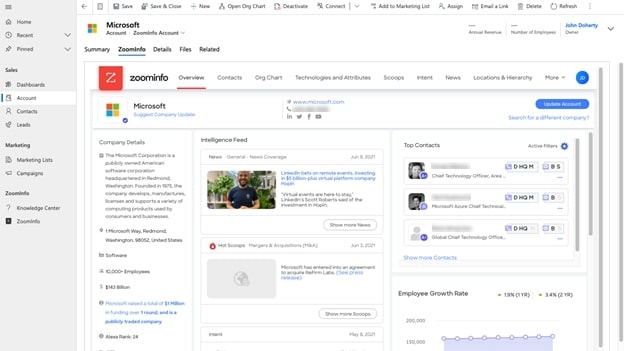
Zoom and ZoomInfo are two distinct tools that cater to entirely different categories, each offering unique features and capabilities tailored to their specialized domains.
Zoom is renowned as a video conferencing and virtual meeting platform, excelling in facilitating real-time communication and collaboration. It boasts a user-friendly interface, high-quality video, and a versatile range of meeting options, from one-on-one meetings to webinars and virtual events. Zoom is the go-to choice for individuals and businesses seeking seamless remote connectivity and efficient online collaboration. Its focus is primarily on delivering top-notch video conferencing experiences and enhancing real-time communication.
In contrast, ZoomInfo specializes in B2B contact and company data, providing a valuable resource for lead generation, sales intelligence, and marketing efforts. The platform is all about supplying businesses with accurate and up-to-date information, empowering them to target and engage with potential clients effectively. ZoomInfo goes beyond real-time communication and delves deep into data-driven strategies, offering insights into B2B customers and prospects.
While both Zoom and ZoomInfo have their strengths, they address entirely different needs. Zoom excels in providing a virtual meeting and collaboration solution, whereas ZoomInfo specializes in data-driven B2B strategies. The choice between these tools hinges on your specific business objectives. If your priority is seamless remote communication and collaboration, Zoom is the preferred choice. Conversely, if you require accurate business data for targeted marketing and sales efforts, ZoomInfo is the superior option. Ultimately, they complement different aspects of business operations and are not directly comparable due to their distinct focuses.
Zoom Meetings pros and cons
What are the advantages of Zoom Meetings?
- User-friendly interface: Zoom offers an intuitive and user-friendly interface, making it easy for both hosts and participants to join and navigate virtual meetings.
- Versatile meeting options: Zoom provides various meeting options, including one-on-one meetings, group meetings, webinars, and virtual events, accommodating a wide range of communication needs.
- High-quality video and audio: Zoom offers high-definition video and audio quality, ensuring clear and crisp communication during meetings.
- Screen sharing and collaboration tools: Zoom allows participants to share their screens, collaborate on documents, and use virtual whiteboards, enhancing productivity during meetings.
- Cross-platform compatibility: Zoom is compatible with multiple devices and platforms, including desktop computers, smartphones, and tablets, making it accessible to a diverse user base.
What are the disadvantages of Zoom Meetings?
- Security concerns: Zoom faced security and privacy issues in the past, which raised concerns about data encryption and unauthorized access to meetings. However, Zoom has taken steps to address these issues.
- Limited free plan: The free version of Zoom has time limitations on group meetings, making it less suitable for extended or large gatherings.
- Meeting duration limits: Even paid Zoom plans have limitations on meeting durations for some subscription levels, which can be a drawback for long meetings or webinars.
- Bandwidth intensive: Zoom's high-quality video and audio can be bandwidth-intensive, which may cause connectivity issues for users with slow or unstable internet connections.
- Reliance on internet connectivity: Zoom relies heavily on a stable internet connection, and any disruptions in the connection can lead to dropped calls or reduced meeting quality.
Compare Zoom Meetings to other tools
ZoomInfo pros and cons
What are the advantages of ZoomInfo?
- Comprehensive B2B data: ZoomInfo offers an extensive and constantly updated database of B2B contacts and company information, making it a valuable resource for lead generation and business development.
- Accurate and reliable data: ZoomInfo prides itself on providing accurate and reliable data, helping businesses target their ideal customers with confidence.
- Advanced search and filtering: ZoomInfo's platform allows users to perform advanced searches and apply filters to pinpoint specific leads or companies that match their criteria.
- Integration capabilities: ZoomInfo can integrate with various CRM and marketing automation platforms, streamlining the data enrichment process and enhancing sales and marketing efforts.
- Sales and marketing tools: ZoomInfo offers additional tools and features, such as intent data, email verification, and campaign targeting, to help businesses boost their sales and marketing strategies.
What are the disadvantages of ZoomInfo?
- Pricing: ZoomInfo can be relatively expensive, especially for small businesses or startups, which may find its services cost-prohibitive.
- Learning curve: While powerful, ZoomInfo's platform can have a learning curve for new users, and it may take some time to fully utilize all its features effectively.
- Limited coverage in some regions: ZoomInfo's database may have limited coverage in certain regions or industries, potentially restricting its usefulness for businesses with specific targeting needs.
- Data privacy concerns: Like any data provider, ZoomInfo faces data privacy concerns, and businesses must ensure compliance with data protection regulations when using its services.
- Dependence on external data sources: ZoomInfo relies on external data sources to compile its database, which means the accuracy of the data can be influenced by the quality of those sources.
Compare ZoomInfo to other tools
Zoom Meetings compared to ZoomInfo
Zoom is a widely recognized video conferencing platform known for its user-friendly interface, high-quality video and audio, and versatile meeting options, making it ideal for real-time communication and collaboration.
In contrast, ZoomInfo specializes in B2B contact and company data, offering a comprehensive database for lead generation and sales intelligence. While Zoom excels in virtual meetings and webinars, ZoomInfo provides accurate and reliable business data for targeted marketing efforts. Both platforms cater to distinct needs, with Zoom focusing on real-time communication and ZoomInfo serving as a valuable resource for businesses seeking B2B contacts and company information.
Is Zoom Meetings better than ZoomInfo?
Comparing Zoom and ZoomInfo is like comparing apples to oranges. Zoom is a renowned video conferencing platform, excelling in real-time communication and collaboration. It offers a user-friendly interface, high-quality video, and versatility in meeting options. On the other hand, ZoomInfo specializes in B2B contact and company data, serving as a vital resource for lead generation and sales intelligence.
The choice between them depends on your specific needs. If you require effective virtual meetings, Zoom is the way to go. However, if you need accurate business data for targeted marketing, ZoomInfo is the superior option. It's a matter of choosing the right tool for your purpose.
What is Zoom Meetings best used for?
Zoom is best used for facilitating real-time communication and collaboration. It excels in hosting virtual meetings, video conferences, webinars, and online presentations. Businesses and individuals rely on Zoom for connecting with remote teams, clients, and partners, conducting interviews, and delivering presentations. Its user-friendly interface, high-quality video and audio, and versatile features make it an ideal choice for remote work, education, and social interactions.
Additionally, Zoom offers screen sharing, document collaboration, and chat tools, enhancing productivity during meetings. Overall, Zoom is a powerful platform for bridging geographical distances and enabling effective communication in various contexts.
Can Zoom Meetings replace ZoomInfo?
Zoom and ZoomInfo serve entirely different purposes and cannot replace each other. Zoom is a video conferencing platform designed for real-time communication and collaboration, enabling virtual meetings and webinars. In contrast, ZoomInfo specializes in B2B contact and company data, providing essential information for lead generation, sales intelligence, and marketing efforts.
While Zoom enhances communication, ZoomInfo empowers businesses with valuable data for targeted outreach. Attempting to replace one with the other would result in a significant gap in either virtual communication or data-driven business strategies. Both have their unique roles and are best used in conjunction to maximize their respective benefits.
Is Zoom Meetings cheaper than ZoomInfo?
Comparing the pricing of Zoom and ZoomInfo is like comparing apples to oranges because they serve entirely different purposes. Zoom is a video conferencing platform with subscription plans based on meeting hosts and features. Zoom’s pricing structure offers a range of plans, including a free one with limitations.
In contrast, ZoomInfo is a B2B data provider offering business data subscriptions based on the volume of data and the features you require. The cost of ZoomInfo depends on your specific data needs and usage, making it challenging to make a direct cost comparison. Ultimately, their pricing structures are tailored to their respective services, and affordability depends on your business's objectives.
Is there a better Video Conferencing software than Zoom Meetings?
While Zoom offers an excellent video conferencing experience, it's wise to consider alternatives that might better suit your particular requirements.
Several noteworthy alternatives to Zoom in the video conferencing space include Microsoft Teams, Google Meet, Cisco Webex, and Skype for Business.
The choice of video conferencing software depends on your business's specific needs, such as integration with other tools, security features, or collaboration capabilities. However, if you're seeking a reliable platform known for its ease of use, high-quality video, and a wide range of features, Zoom remains a top choice for many users.
20% off the annual One Pro plan on Zoom Meetings
Get 20% off the annual One Pro plan on Zoom Meetings and up to $252 savings with Secret.
ZoomInfo compared to Zoom Meetings
ZoomInfo and Zoom are distinct tools serving different purposes. Zoom is a widely used video conferencing platform, facilitating real-time communication and collaboration through virtual meetings and webinars. It boasts user-friendly features, high-quality video and audio, and versatility for various communication needs.
In contrast, ZoomInfo specializes in B2B contact and company data, supplying valuable information for lead generation, sales intelligence, and marketing efforts. While Zoom enhances communication, ZoomInfo empowers businesses with accurate data for targeted outreach.
Is ZoomInfo better than Zoom Meetings?
ZoomInfo and Zoom are fundamentally different tools, and it's not a matter of one being better than the other. ZoomInfo is a B2B contact and company data provider, specializing in delivering accurate business data for lead generation and sales intelligence. In contrast, Zoom is a video conferencing platform designed for real-time communication and collaboration through virtual meetings and webinars.
The choice between ZoomInfo and Zoom depends entirely on your specific needs—if you require robust data for targeted marketing efforts, ZoomInfo is invaluable, while Zoom is indispensable for virtual communication and collaboration. It's about choosing the right tool for the right purpose.
What is ZoomInfo best used for?
ZoomInfo is best used for B2B lead generation and sales intelligence. It provides a comprehensive database of business contacts and company information, enabling organizations to identify and target their ideal customers effectively.
With ZoomInfo, businesses can access accurate and up-to-date data, making it easier to reach decision-makers, nurture leads, and drive sales. It is particularly valuable for sales and marketing teams looking to expand their customer base, improve conversion rates, and enhance their overall business development efforts. ZoomInfo's data-driven insights empower organizations to make informed decisions and strategize their outreach with precision in the B2B landscape.
Can ZoomInfo replace Zoom Meetings?
ZoomInfo cannot replace Zoom, as they serve entirely different purposes. ZoomInfo specializes in B2B contact and company data, providing valuable information for lead generation, sales intelligence, and marketing efforts. In contrast, Zoom is a video conferencing platform designed for real-time communication and collaboration through virtual meetings and webinars.
Attempting to substitute one for the other would result in a significant gap in either data-driven business strategies or virtual communication capabilities. Both ZoomInfo and Zoom have their unique roles, and they are best used in conjunction to maximize their respective benefits in the business context.
Is ZoomInfo cheaper than Zoom Meetings?
ZoomInfo and Zoom are not directly comparable in terms of pricing, as they serve entirely different purposes. Zoom is a video conferencing platform with subscription plans based on meeting hosts and features, including a free plan with limitations.
On the other hand, as a B2B data provider, ZoomInfo’s pricing depends on the volume of data and specific features you require for lead generation and sales intelligence. The cost comparison between the two is challenging due to their distinct offerings. Ultimately, the choice depends on your business's objectives, with Zoom for communication and ZoomInfo for data-driven strategies.
Is there a better Prospecting software than ZoomInfo?
While ZoomInfo provides essential B2B contact and company data, exploring alternatives can help you tailor your data strategy to your specific requirements.
Some notable alternatives to ZoomInfo in the realm of B2B data providers include Apollo.io, Hunter, RocketReach, and Dun & Bradstreet.
Your choice depends on factors such as data accuracy, coverage, integration capabilities, and budget considerations. However, if you're seeking a reliable and comprehensive B2B data solution known for its accuracy, ZoomInfo remains a top contender for businesses looking to enhance their lead generation and sales intelligence efforts.
Features comparison
Zoom is Superior for Virtual Meetings Compared to ZoomInfo

ZoomInfo and Zoom cater to distinct business needs, with Zoom excelling in real-time communication through its video conferencing capabilities. Zoom's platform enables seamless virtual meetings, fostering efficient collaboration and communication. For instance, teams can convene quickly, share insights, and collaborate effortlessly, vital for businesses emphasizing immediate interaction.
In contrast, ZoomInfo offers a comprehensive suite tailored for sales and marketing requirements, focusing on data-driven strategies rather than real-time communication. While ZoomInfo excels in providing valuable business data, it doesn't provide the instant collaborative environment that Zoom's core function prioritizes. Therefore, the choice between Zoom and ZoomInfo hinges on your specific business objectives—immediate collaboration or data-driven marketing and sales strategies.
Zoom Takes the Lead in User-Friendliness over ZoomInfo

When it comes to ease-of-use, Zoom surpasses ZoomInfo with its straightforward and intuitive design. Zoom's user interface is not only easy to grasp but also efficient for both beginners and experienced users. Its well-organized dashboard simplifies tasks like scheduling meetings, joining video calls, and accessing recorded sessions. For example, scheduling a meeting on Zoom is as easy as a few clicks, making it accessible to anyone.
In contrast, ZoomInfo, while a potent marketing tool, demands more time and patience for proficiency. Its feature-rich platform can initially overwhelm users, especially those less familiar with such software. Although ZoomInfo offers helpful guides and tutorials, its steeper learning curve positions Zoom as the preferred choice for those valuing user-friendliness and a smoother onboarding experience.
ZoomInfo Surpasses Zoom in the Identification of Ideal Customers

ZoomInfo and Zoom serve different purposes, and when it comes to identifying and targeting ideal B2B customers, ZoomInfo holds a distinct advantage. ZoomInfo leverages robust data-driven insights and buying signals to empower businesses in pinpointing prospective customers who are actively ready for purchase. For example, it allows sales teams to access precise contact information and organizational details of potential leads, facilitating targeted outreach.
In contrast, while Zoom offers valuable tools for team collaboration and communication, it lacks the specialized customer identification and prospecting capabilities that ZoomInfo provides. Therefore, if your primary goal is to identify and engage with prospective B2B customers effectively, ZoomInfo stands out as the superior choice, offering data-driven insights and a wealth of valuable information for your sales and marketing efforts.
Zoom and ZoomInfo are On Par with Data Security
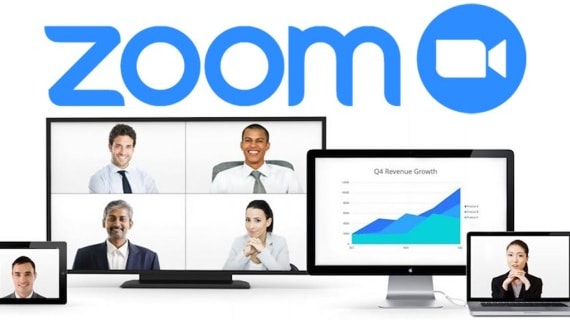
Both Zoom and ZoomInfo place a high priority on data security, ensuring that businesses can trust their platforms for secure communications and data handling.
Zoom employs robust AES 256-bit encryption in its VoIP system, guaranteeing secure calls globally. This encryption level is essential for protecting sensitive information during video conferences, making Zoom a dependable choice for businesses that prioritize communication security.
Similarly, ZoomInfo is dedicated to maintaining compliance with global data privacy standards, including CCPA and GDPR. Additionally, it holds ISO 27001 and ISO 27701 certifications, showcasing its commitment to data security and privacy. These certifications indicate that ZoomInfo follows rigorous information security management practices, safeguarding customer data.
ZoomInfo Leads in Integration Versatility Over Zoom
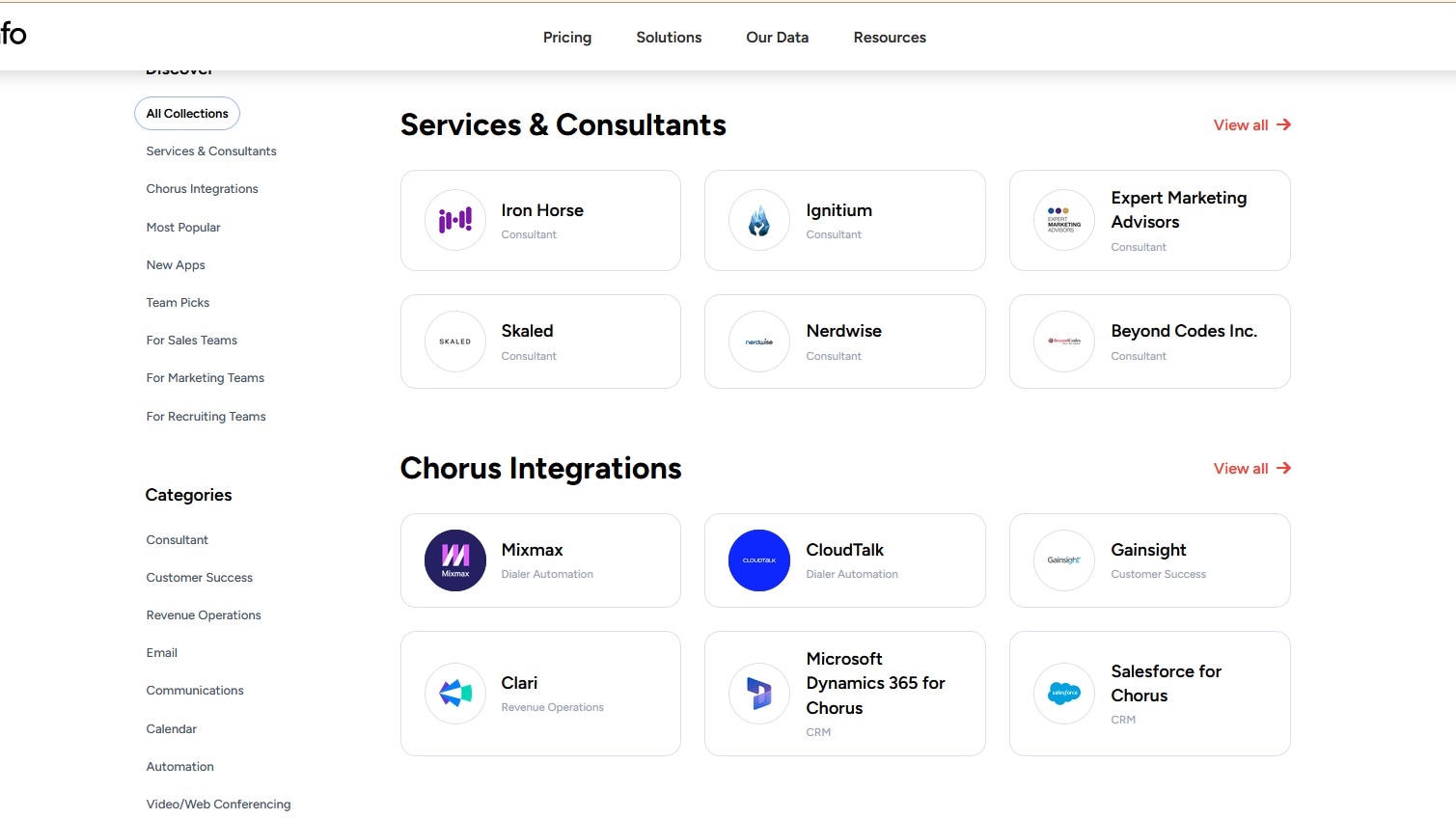
In terms of integration possibilities, ZoomInfo takes a significant lead over Zoom, offering a wide array of seamless integrations with leading CRM and Email Marketing tools. ZoomInfo's compatibility with platforms like Salesforce, HubSpot, Outlook, and Gmail allows businesses to enhance their sales and marketing efforts by accessing valuable insights from ZoomInfo's extensive database directly within their preferred applications. For example, sales teams can enrich their CRM data with ZoomInfo's data for more targeted outreach.
In contrast, Zoom focuses primarily on integrations related to conferencing and scheduling needs, such as Microsoft Teams, Google Calendar, and Slack. While these integrations are valuable for enhancing the meeting experience, they are more specialized and limited compared to ZoomInfo's extensive business function integrations. Therefore, for companies seeking comprehensive integration capabilities to bolster their existing sales and marketing machinery, ZoomInfo emerges as the clear choice.
ZoomInfo's Data Automation Trumps Zoom's Limited Offerings

In the realm of data management automation, ZoomInfo stands out with its robust capabilities. ZoomInfo's OperationsOS goes beyond basic automation, offering features to cleanse customer data, identify and eliminate duplicate entries, and accurately match leads with the correct accounts. For instance, it ensures that customer information is accurate and up-to-date, which is vital for successful B2B outreach and marketing campaigns.
In contrast, while Zoom provides 'Zoom IQ,' an AI-powered assistant that aids in scheduling and organization, it lacks the comprehensive data management solutions that ZoomInfo provides. Zoom's focus primarily lies in real-time communication and collaboration, whereas ZoomInfo specializes in data-driven strategies. Therefore, if you prioritize efficient data management and accuracy, ZoomInfo's automation capabilities surpass those of Zoom, offering a powerful edge in B2B data operations.
Subscribe to our newsletters.
No FOMO here. Stay up-to-date on all the latest deals and news with our monthly newsletter straight to your inbox like 123,000+ entrepreneurs (+ Get 10% off on on our Premium Membership!)
Zoom Meetings vs ZoomInfo: Which is the best for your business?
Zoom Meetings is the best tool for you if:
- You need a reliable and user-friendly video conferencing platform for remote meetings and collaboration.
- Your business requires high-quality video and audio communication with ease of access.
- You want a platform with a versatile range of meeting options, including webinars and virtual events.
- You value cross-platform compatibility, allowing participants to join from various devices.
- You seek a trusted solution for real-time communication and require features like screen sharing and chat tools.
ZoomInfo is the best tool for you if:
- Your business relies on accurate B2B contact and company data for lead generation and sales intelligence.
- You need a comprehensive database of potential customers and their organizational details.
- You want to streamline your sales and marketing efforts by integrating with CRM and marketing automation tools.
- You prioritize compliance with data privacy standards like GDPR and CCPA.
- You seek a data-driven solution to identify and target ideal B2B customers actively ready for purchase.
Alternatives to Zoom Meetings & ZoomInfo
Promotions on Video Conferencing software
Start saving on the best SaaS with Secret.
Secret has already helped tens of thousands of startups save millions on the best SaaS like Zoom Meetings, ZoomInfo & many more. Join Secret now to buy software the smart way.







